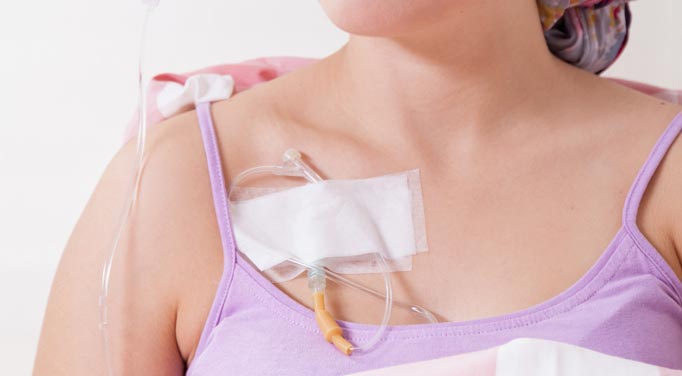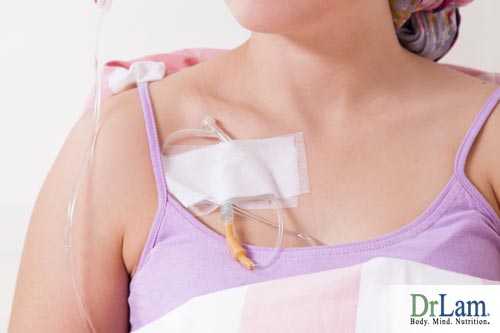 Many cancers are hormonal related. Estrogen dominance may be accountable for breast, prostate, cervix, endometrial, uterine, and ovarian cancer, for example. Many researchers attribute the high incidence of these cancers to the ubiquitous presence of environmental estrogen (also called xenobiotics) that is present in our food such as commercially raised poultry and cattle; pesticides; and common household goods such as plastics that contain estrogen like compounds. Scientists are researching the effect of hormonal imbalance treatment in preventing hormone sensitive cancers from developing.
Many cancers are hormonal related. Estrogen dominance may be accountable for breast, prostate, cervix, endometrial, uterine, and ovarian cancer, for example. Many researchers attribute the high incidence of these cancers to the ubiquitous presence of environmental estrogen (also called xenobiotics) that is present in our food such as commercially raised poultry and cattle; pesticides; and common household goods such as plastics that contain estrogen like compounds. Scientists are researching the effect of hormonal imbalance treatment in preventing hormone sensitive cancers from developing.
Phyto-estrogens such as soy and DIM are natural weak estrogen from food that is has 1/500 the potency of estrogen in our body. They work by competitively inhibiting the estrogen receptor site on the cell membrane, thereby preventing estrogen from exerting its effect on the cell. These phytoestrogen also exert a weak estrogen effect by themselves and therefore intake should be monitored to avoid excessive estrogen in the body. Hormone replacement must be taken with care since some cancers are hormone sensitive.
In addition to phytoestrogen, natural progesterone can act as a counterbalancing force to estrogen and can be considered for those with cancer due to estrogen dominance as a hormonal imbalance treatment.
Other hormones that have anti-cancer effect that may be looked at as a hormonal imbalance treatment would include DHEA and melatonin.
Note, these supplements are for cancer prevention. If you have cancer or have had cancer in the past, these remedies may not be right for you. Consult with your physician before starting on any of these supplements.
Especially popular in recent years is soy products, a plant-based phytoestrogen that is 500 times weaker than the body's estrogen. The active ingredient is isoflavone, which acts as a competitive inhibitor of regular estrogen. By binding itself to the cell's estrogen receptor site, the body's estrogen is unable to penetrate. The estrogen load in the body is reduced.
More than 1,000 medical and scientific papers have been published on isoflavones and soy. There are three primary isoflavones in soybeans: genistein, daidzain, and glycitein. In various experimental models, isoflavones have exhibited properties that suggest they may help to lower the risk of cancer, heart disease, osteoporosis, and for the relief of menopause symptoms such as hot flashes. In addition to breast cancer, soybean isoflavones may help reduce the risk of several types of cancer, including lung, colon and rectal cancer.
Soybean powder contains a high amount of genistein. Genistein is an antioxidant that may inhibit the formation of new blood vessel, thereby inhibiting tumor growth.
Dosage: 45 gram of soybean powder. Soy products have been heavily promoted in recent years. It should be noted that unless soy is fermented (such as miso or tempeh), intake of unfermented soy (such as tofu) could do more harm than good in our body due to its toxic metabolites if excess amount is taken. Isoflavone extract do not have this problem and should be considered instead.
Estrogen dominance is a major cause and precursor to many hormonal related cancers such as breast, cervix, endometrial, and ovarian and prostate cancer.
Elevated estrogen level can be neutralized by reduction of estrogen exposure through a proper wholesome fresh whole food diet, especially a diet rich in cruciferous vegetables such as broccoli, cauliflower, cabbage, kale, Bok choi, and Brussels sprouts. Take at least 3- 5 servings of these important vegetables a day.
 Fortunately, scientists are able to isolate the active ingredient of cruciferous vegetables. It is called Indole-3-Carbinol (I3C). Unfortunately, I3C has drawbacks. Numerous studies have shown that I3C, and in particular its reaction product ICZ, are associated with a number of unwanted activities that are not compatible with safe, long-term use. I3C supplementation is not recommended. Fortunately, I3C combines with stomach acid to form 3,3-Diindolylmethane (DIM). DIM supplementation is available. It is safe.
Fortunately, scientists are able to isolate the active ingredient of cruciferous vegetables. It is called Indole-3-Carbinol (I3C). Unfortunately, I3C has drawbacks. Numerous studies have shown that I3C, and in particular its reaction product ICZ, are associated with a number of unwanted activities that are not compatible with safe, long-term use. I3C supplementation is not recommended. Fortunately, I3C combines with stomach acid to form 3,3-Diindolylmethane (DIM). DIM supplementation is available. It is safe.
DIM is a balancer of estrogen metabolism. Let us review the pathway of estrogen metabolism first. Estrogen is metabolized in the liver. One of its metabolites - 16 alpha hydroxyl estrone - is a carcinogenic metabolite implicated in propagating and promoting many hormone-sensitive cancers. Studies have shown that it was not the absolute amount of it, but the ratio of another estrogen metabolite called 2 hydroxy estrone to 16 alpha hydroxy estrone, that was the more important predictor of cancer risk. The 2 hydroxy estrone is therefore known as the good or protective estrogen, and the 16 alpha hydroxy estrone has been deemed to be the bad or carcinogenic estrogen. One of the most efficient and healthiest ways to increase the ratio of these estrogen metabolites in favor of the good estrogen is to eat large quantities of cruciferous vegetables or take DIM supplements as a hormonal imbalance treatment.
Over 40 studies on DIM are on file in the National Library of Medicine database. As little as 0.5- 2 mg mg/kg body weight/day of DIM has been demonstrated as an effective dose. DIM can be used in conjunction with phytoestrogen such as isoflavones. Its use is cautioned in women taking the oral contraceptive as it theoretically may reduce its effectiveness.
The use of DIM is compatible with other phyto-nutrients such as soy, black choosy, red clover, and chaste berry extract.
Isoflavone and DIM work under different pathways. While studies have shown that supplementation with 200 mg/day of soy isoflavones increase the production of estrogen metabolites, the effect is much less than that seen with absorbable DIM. From a nutritional supplementation perspective, both DIM and isoflavone supplement should be considered, both in optimum and not mega doses.
It inhibits breast cancer growth in both estrogen positive and estrogen negative cancer growth in terms of a hormonal imbalance treatment. It works well together with tamoxifen and inhibits angiogenesis.
Dosage: 40-60 mg once or twice a day. It also stimulates progesterone level when progesterone level is low. DIM is 10 x the potency of I3C.
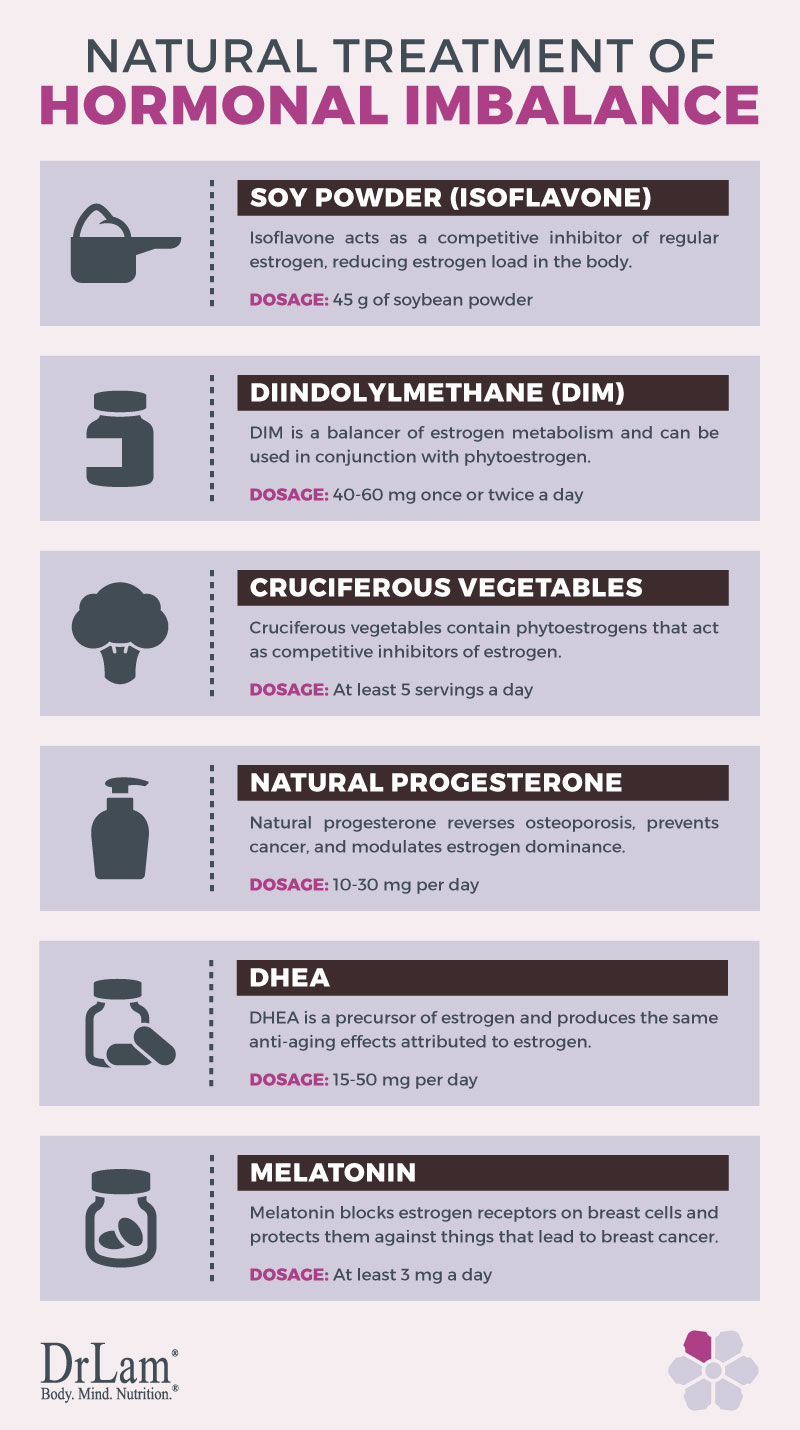
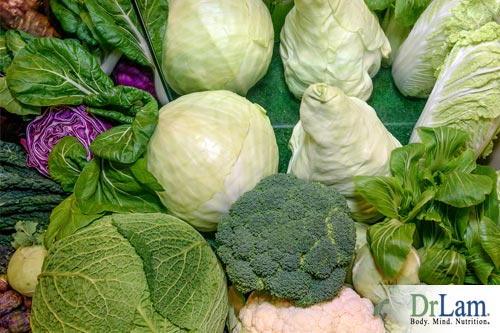 Cruciferous vegetables such as cauliflower, Brussels sprouts and bok choi, are good sources of phyto-estrogen. These acts as competitive inhibitors of estrogen in our body and reduces the amount of circulating estrogen responsible for promoting breast, cervical, ovarian, and uterine cancer. In fact, the only approach to breast cancer prevention other than early diagnosis endorsed by the medical establishment is use of the drug tamoxifen, which competes with estrogen for estrogen receptors, similar to the manner in which the phyto-estrogens in plants do.
Cruciferous vegetables such as cauliflower, Brussels sprouts and bok choi, are good sources of phyto-estrogen. These acts as competitive inhibitors of estrogen in our body and reduces the amount of circulating estrogen responsible for promoting breast, cervical, ovarian, and uterine cancer. In fact, the only approach to breast cancer prevention other than early diagnosis endorsed by the medical establishment is use of the drug tamoxifen, which competes with estrogen for estrogen receptors, similar to the manner in which the phyto-estrogens in plants do.
Dose: At least 5 servings a day.
Cancers of the breast, ovaries and uterus account for 40% of cancer incidence in U.S. women. Breast cancer is a silent epidemic, striking 1 in 9 women; up from 1 in 30 women in 1960, before estrogen replacement therapy was popularized. FDA-approved estrogen drugs have been documented to cause cancer. Published studies have shown that women taking estrogen and a synthetic progesterone drug had a 32 to 46% increases in their risk of breast cancer. The relative risk is increased by 20% even after four years of use compared to no hormonal imbalance treatment, and that surprisingly there was a 40% increased risk of breast cancer using both estrogen and synthetic progesterone (called progestin) combined, compared to only 20% increase for estrogen alone. Clearly the progestin that is supposing counter-balance the estrogen is not what the body recognizes is good.
In addition to breast cancer risk, long-term estrogen replacement therapy increased the risk of fatal ovarian cancer.
A large 7-year study included 240,073 pre- and post-menopausal women focuses on this. After adjusting for other risk factors, women who used estrogen for 6 to 8 years had a 40% higher risk of deadly ovarian tumors, while women who used estrogen drugs for 11 or more years had a startling 70% higher risk of dying from cancer of the ovaries.
What the body needs is natural progesterone to counter the estrogen effect. Synthetic progesterones are far different from the natural form and do not have the anti-cancer properties. Premenopausal women who were deficient in progesterone had a 5.4 times greater risk of breast cancer.
The use of natural progesterone cream to reverse osteoporosis, prevent cancer, and modulate estrogen dominance is a key consideration as a hormonal imbalance treatment for anyone with hormonal related cancer such as breast, ovary, and uterine cancer. It use should also be considered for with benign fibrocystic diseases or fibroids, both of which may be early symptoms of estrogen dominance that need natural progesterone to counter-balance.
Dosage: 10-30 mg per day.
DHEA (dehydroepiandrosterone) is a hormone produced by the adrenal glands that is a precursor primarily of androgens (male hormones) but also of estrogens (female hormones). Blood levels of DHEA peak at about age 20 and then steadily decline. Laboratory studies on animals (mice in particular) treated with DHEA looked younger had glossier coats, and less gray hair. DHEA prevented breast, colon, and liver cancers and protected against infection by strengthening the immune system in other studies with mice. Genetically obese mice given DHEA did not get obese, but DHEA does not appear to increase weight loss in humans. DHEA reduced the blood sugar in genetically diabetic mice. In rabbits fed heavy cholesterol diets, DHEA reduced the severity of clogging of the arteries. Recent studies in elderly people have found that DHEA supplementation results in overall improvement in their feeling of well being. As a result, the news media have been touting DHEA as "the first fountain of youth drug". It is interesting that DHEA produces the same anti-aging effects attributed to estrogen. It could be that some of the beneficial effects of DHEA are the result of some of the DHEA being converted into youth hormones such as estrogen and testosterone.
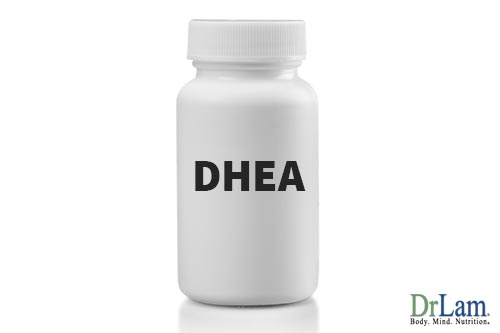 The evidence that DHEA may prevent breast cancer is difficult to evaluate. Animal studies have shown that DHEA is very effective in preventing breast cancer, while the human studies have been inconclusive. There are studies showing that DHEA protects against human breast cancer cell proliferation by blocking estrogen receptors on breast cells, yet other studies contradict this finding.
The evidence that DHEA may prevent breast cancer is difficult to evaluate. Animal studies have shown that DHEA is very effective in preventing breast cancer, while the human studies have been inconclusive. There are studies showing that DHEA protects against human breast cancer cell proliferation by blocking estrogen receptors on breast cells, yet other studies contradict this finding.
There are contradictions in the scientific literature regarding hormonal imbalance treatment or hormone replacement therapy and cancer. Of the various hormone replacement therapies women may choose, only melatonin appears to protect against both estrogen dependent and non-estrogen dependent breast cancer.
Dose: 15-50 mg per day and only under supervision of a physician.
Every cell in the human body has a gene called the P53 gene. This gene tracks the degeneration of the cell and when it finds that the cell is damaged beyond repair, it triggers its self-destruction. The P53 gene triggers old cells that died through this natural self-destruction process. New cells are then created through cell division.
It is postulated that melatonin fights cancer by the re-expression of the P53 gene. With this function re-energized, the tumor cells recognize their own degenerated state and naturally die on their own thus allowing the body to manage the process of elimination of the dead tumor cell.
Melatonin is therefore much more than a natural sleeping pill. Melatonin's link to cancer was first reported when researchers discovered that flight attendants have twice the normal rate while blind people have half the normal rate of breast cancer. Blind people are known to have high levels of melatonin in their bodies. It is believed that is why blind people have half the normal rate of breast and other cancers. This leads to the thinking that melatonin may be used as a hormonal imbalance treatment. Flight attendants, on the other hand, have frequent jet lag and sleep disturbance. They have less melatonin, which according to researchers, accounts for the twice the normal rate of breast cancer. Melatonin blocks estrogen receptors on breast cells, stopping them from proliferating in response to estrogen and other factors that promote tumor growth. Melatonin also protects breast cell against chemical carcinogens, free radical damage, cortisol-induced damage, and non-estrogen dependent cellular changes that lead to breast cancer. Low dose melatonin therapy should be considered for any breast cancer patient in remission, and high dose for those with active disease.
In a study involving 63 patients with non-small cell lung cancer refractory to cisplatin therapy, those receiving 10mg/day of melatonin lived longer on the average than those receiving supportive care alone (6 vs. 3 months) and more likely to survive for one year (8/31 survivors vs. 3 months). There was no associated drug toxicity. Treatment with 20mg/day of melatonin was also noted to increase one-year survival than supportive cancer alone in patients with brain metastasis.
 Melatonin is used a number of times as an adjunct to standard chemotherapy in humans. In one study using 20mg of melatonin a day, One year survival is significantly higher in-patient receiving adjunctive melatonin compare to standard chemotherapy alone.
Melatonin is used a number of times as an adjunct to standard chemotherapy in humans. In one study using 20mg of melatonin a day, One year survival is significantly higher in-patient receiving adjunctive melatonin compare to standard chemotherapy alone.
It should also be noted that the doses of melatonin used in these cancer studies (20-40 mg per night) were considerably higher than the over-the-counter doses (3-6 mg) recommended for sleep. Those unfamiliar with melatonin dosing should note that the dosage to induce sleep is highly variable. Many have reported better sleep with lower dose melatonin (0.5 mg to 1 mg) than at high dose (5 mg and up).
Dosage: Breast cancer patients should consider melatonin supplement of at least 3 mg /day while in remission. 50 or more is used for active cancer patients. It should be taken at bedtime. It usually induces drowsiness and improves the quality of sleep. A slight increase of dreaming episodes may be experienced as sleep is improved.
Maintaining hormonal balance is a key factor in preventing cancer and reversing hormone sensitive cancers. Cancers such as breast and prostate cancer are closely linked to estrogen dominance syndrome. Normalization of estrogen in our body can be achieved naturally with phyto-estrogen from food such as soy, cruciferous vegetables, and supplements such as DIM. Natural progesterone cream that counterbalance the estrogen should also be considered.
Melatonin is a natural hormone and a strong-antioxidant. Its use should be considered for many cancer patients, especially those with breast cancer.
© Copyright 2006 Michael Lam, M.D. All Rights Reserved.
Depovera is a prescription drug that is designed to cause an "instant menopause" by resetting the menstrual cycle. It has good uses but also many side effects.
